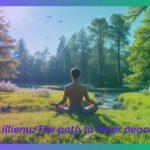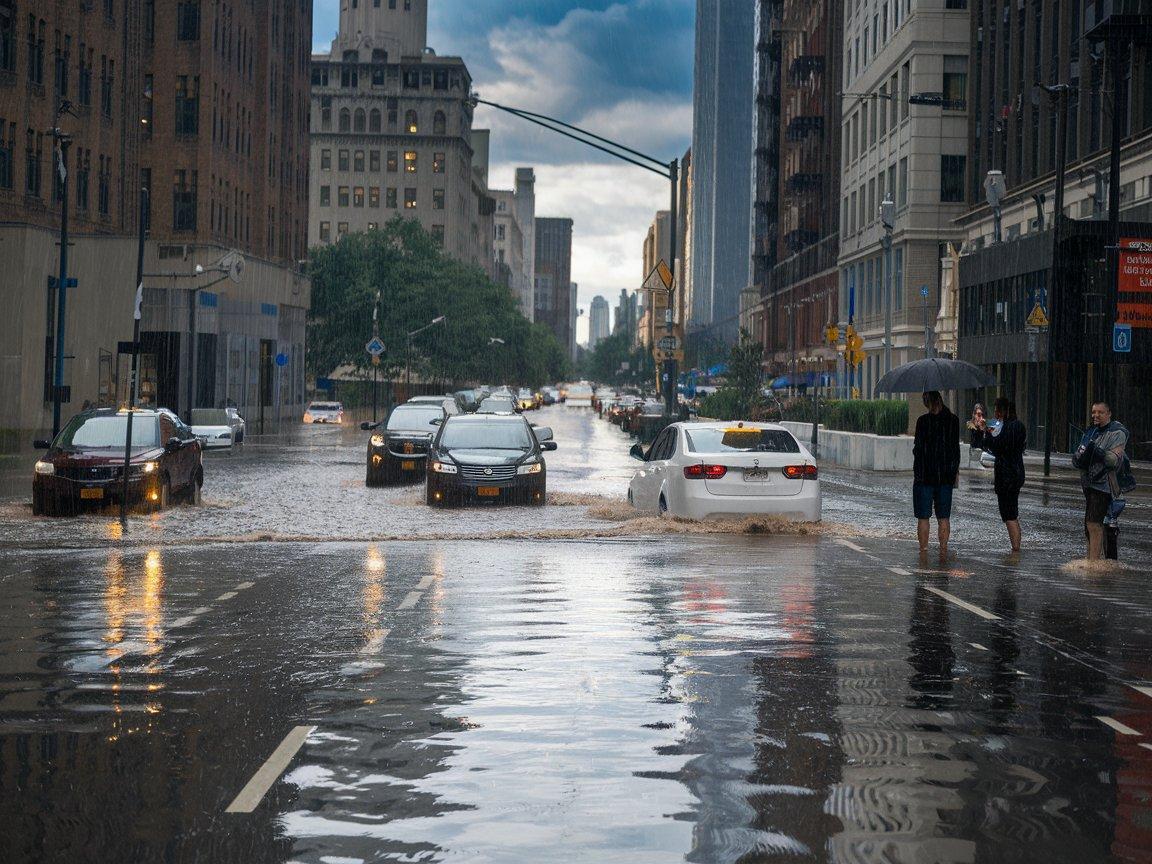As the skyline of New York City continues to stretch ever higher, so too does its impact on the climate that envelops it. From soaring temperatures in concrete jungles to altered rainfall patterns that leave us guessing about our umbrellas, urbanization is reshaping not just the city’s landscape but its very atmosphere. In this blog post, we’ll delve into how the relentless march of development affects weather trends in the Big Apple and what predictions lie ahead as we navigate this evolving environment. Join us as we uncover the intricate relationship between bustling streets and shifting climates—because when it comes to urban living, understanding our weather isn’t just a luxury; it’s a necessity!
Introduction: The relationship between urbanization and weather patterns in New York
New York City, the concrete jungle that never sleeps, is not just alive with bustling streets and towering skyscrapers; it’s also a place where weather patterns are constantly evolving. As the city expands, urbanization becomes an ever-pressing factor influencing how we experience weather in this iconic metropolis. From sweltering summers to unpredictable winters, the relationship between our urban environment and climatic shifts is undeniable. But what exactly does this mean for New Yorkers? Dive into the fascinating intersection of urban growth and weather dynamics as we uncover trends and predictions that could shape our city’s climate future.
Historical Context: How has urbanization changed the weather in New York?
Urbanization in New York has been a double-edged sword. As the city expanded, it dramatically transformed its landscape and weather patterns.
The rise of skyscrapers and concrete jungles replaced vast green spaces with impermeable surfaces. This shift altered how heat is absorbed and released in the environment.
Historical data reveals that temperatures have risen notably over the decades. The bustling cityscape traps warmth, making urban areas noticeably hotter than their suburban counterparts.
Rainfall patterns also shifted as urban development changed natural drainage systems. Increased runoff leads to flooding, especially during heavy storms.
Wildlife habitats diminished due to construction projects, reducing biodiversity. Fewer plants mean less natural cooling and air purification.
Understanding these changes offers insights into today’s weather phenomena across New York City—an ever-evolving relationship between nature and human development shaping our experiences of “weer New York.”
Urban Heat Island Effect: Explaining the phenomenon and its impact on New York’s weather
The Urban Heat Island (UHI) effect is a fascinating phenomenon that significantly alters weather patterns in New York. Essentially, it occurs when urban areas become warmer than their rural counterparts due to human activities and infrastructure.
Concrete, asphalt, and buildings absorb and retain heat. In cities like New York, the abundance of these materials leads to increased temperatures, especially during summer months. This can result in sweltering days for residents.
Beyond discomfort, UHI affects local climate systems. Warmer air can lead to altered precipitation patterns. It might intensify storms or create localized flooding events as heavy rain meets saturated ground.
Moreover, higher temperatures strain energy resources as more people rely on air conditioning for relief. This ripple effect creates challenges not just for individuals but also for city management and sustainability efforts aiming to combat rising temperatures across the boroughs.
Air Quality: How does urbanization affect air quality in New York?
Urbanization significantly impacts air quality in New York. As the city grows, traffic congestion increases along with emissions from vehicles. These pollutants contribute to smog and can cause respiratory issues for residents.
High-rise buildings trap heat and pollutants, creating stale air pockets that linger over neighborhoods. This phenomenon worsens during summer months when temperatures rise, exacerbating health risks.
Moreover, construction activities release dust and other particulates into the atmosphere. Urban greenery often takes a backseat to new developments, reducing natural filtration systems that trees and plants provide.
Industrial zones add another layer of complexity. Factories emit volatile organic compounds (VOCs), contributing further to poor air quality.
The cumulative effect is a cocktail of harmful substances circulating throughout the cityscape, challenging efforts to maintain clean air standards amidst ongoing urban expansion.
Extreme Weather Events: Has urbanization made New York more vulnerable to extreme weather events?
New York City, with its towering skyscrapers and bustling streets, faces a unique challenge when it comes to extreme weather events. Urbanization has transformed the landscape, creating vulnerabilities that didn’t exist decades ago.
As concrete and asphalt replace green spaces, water runoff increases significantly. This leads to flooding during heavy rainstorms, overwhelming drainage systems that were designed for a different era.
Moreover, the dense urban environment can amplify wind speeds during storms. Buildings create wind tunnels that make even moderate winds feel more intense.
The city’s infrastructure struggles under pressure from rising temperatures too. Heatwaves become more common as climate change interacts with urban heat islands—areas within cities that experience higher temperatures due to human activities.
With each passing year, New York’s resilience is tested by hurricanes and blizzards alike. Urbanization plays a key role in shaping how these events impact daily life in this iconic metropolis.
Climate Change: The connection between urbanization, climate change, and New York’s weather
Urbanization and climate change are intertwined forces shaping New York’s weather. As the city expands, it alters the natural landscape, replacing greenery with concrete and asphalt. This shift doesn’t just affect aesthetics; it influences local climates.
The proliferation of buildings traps heat, contributing to rising temperatures. The more people inhabit an area, the greater the energy consumption, leading to increased greenhouse gas emissions. These emissions exacerbate global warming and contribute to erratic weather patterns.
Additionally, urban areas like New York experience intensified rainfall due to climate change. Increased precipitation can lead to flooding—a growing concern for residents and infrastructure alike.
As sea levels rise from melting polar ice caps, coastal cities face unprecedented challenges. Adaptation strategies are crucial as we navigate these complex relationships between urban development and changing climatic conditions affecting daily life in New York City.
Predictions for the Future: What can we expect to see in terms of weather trends in New York as urbanization continues?
As New York continues to evolve into a bustling metropolis, its weather patterns are likely to shift in several ways. Increased urbanization will intensify the Urban Heat Island effect, raising temperatures more than surrounding areas. This could lead to sweltering summers and increased reliance on air conditioning.
Precipitation patterns may also change. With more surfaces like concrete and asphalt, stormwater runoff could increase flooding risks during heavy rain events. The infrastructure might struggle to handle sudden downpours.
Moreover, as sea levels rise due to climate change, coastal neighborhoods face heightened vulnerability to storm surges and tidal flooding. Communities must prepare for these challenges through adaptive measures.
The frequency of extreme weather events could escalate too. As humans continue shaping their environment, anticipating shifts in weather becomes essential for resilience planning across the city’s landscape.
Mitigating the Effects of Urbanization on Weather: Possible solutions for reducing the impact of urbanization on
Mitigating the effects of urbanization on weather in New York requires a multifaceted approach. Urban planners, policymakers, and communities must work collaboratively to create solutions that address both immediate and long-term challenges.
One effective strategy is increasing green spaces within the city. Parks, rooftops gardens, and vertical forests can help cool urban areas while improving air quality. These green initiatives not only combat the urban heat island effect but also provide residents with much-needed recreational areas.
Improving public transportation can significantly reduce vehicle emissions. Encouraging mass transit use over personal cars decreases traffic congestion and lowers greenhouse gas emissions—both crucial for enhancing air quality. Investing in electric public transport options could further decrease pollution levels across the city.
Implementing sustainable building practices is another vital step forward. Using energy-efficient materials, installing solar panels, and designing buildings that promote natural ventilation can collectively contribute to reducing overall energy consumption in New York’s densely populated environments.
Enhancing stormwater management systems is essential for coping with extreme weather events exacerbated by climate change. By creating permeable surfaces and expanding retention basins throughout the city, we can mitigate flooding risks while protecting local ecosystems from pollutants carried off by runoff.
Community engagement plays a pivotal role as well; educating residents about sustainability practices fosters awareness about individual contributions toward mitigating urbanization impacts on weather patterns. Initiatives such as tree-planting drives or neighborhood clean-up days empower citizens to take part in proactive measures that benefit their surroundings directly.
These combined efforts will be critical as New Yorkers navigate an evolving climate landscape shaped by ongoing urbanization trends—a challenge demanding urgent attention now more than ever.
Discover the Natural Wonders of Weer New York
Weer, New York may not be a well-known destination for tourists, but it is certainly a hidden gem when it comes to natural wonders. Located in the southeastern part of the state, Weer boasts an abundance of natural beauty that is often overshadowed by its bustling urban neighbor, New York City. From stunning landscapes to unique wildlife, there is so much to discover and appreciate in Weer’s natural environment.
One of the top attractions in Weer is the Finger Lakes region. This area consists of 11 long and narrow lakes formed by glaciers thousands of years ago. Surrounded by rolling hills and lush forests, the Finger Lakes offer breathtaking views and plenty of opportunities for outdoor activities such as hiking, boating, and fishing. The area is also home to numerous wineries, making it a popular spot for wine enthusiasts.
For those seeking more adventure, the Adirondack Mountains are just a short drive from Weer. This vast mountain range offers endless possibilities for outdoor recreation with over six million acres of untouched wilderness. From challenging hikes to scenic drives and everything in between, the Adirondacks are a nature lover’s paradise.
Landmarks
In addition to these larger landmarks, Weer has many smaller but equally impressive natural wonders waiting to be discovered. One such example is Chimney Bluffs State Park located on Lake Ontario. It features unique geological formations known as “bluffs” that were created by continuous erosion from wind and water over time.
Nature lovers will also appreciate Letchworth State Park which has been nicknamed “The Grand Canyon of the East.” The Genesee River flows through this park creating three major waterfalls along its path surrounded by picturesque gorges and cliffs.
Another must-see attraction in Weer is Niagara Falls. While technically located on the border between New York and Canada, this iconic waterfall can easily be accessed from Weer via a short drive or train ride. Witnessing this powerful natural wonder up close is an unforgettable experience that should not be missed.
In addition to these incredible landscapes, Weer also has diverse wildlife to observe. The Montezuma National Wildlife Refuge is home to a variety of birds, including bald eagles and ospreys, making it a popular spot for birdwatchers. Wildlife enthusiasts can also visit the Sterling Nature Center to see native species like deer and foxes in their natural habitat.
Weer’s natural wonders provide a tranquil escape from the hustle and bustle of city life. Whether you’re seeking adventure or simply want to relax and take in the scenic views, there is something for everyone in this charming town’s natural environment. So why not add Weer, New York to your travel bucket list and discover its hidden gems for yourself?
Explore the Charming Small Towns
Urbanization has been a major trend in New York City for decades, with more and more people flocking to the bustling metropolis every year. As a result, the city has seen significant changes in its weather patterns and overall climate. However, amidst the towering skyscrapers and crowded streets of NYC, lies a network of quaint and charming small towns that offer a stark contrast to the fast-paced urban lifestyle.
Located just outside of New York City’s limits, these small towns provide an escape from the hustle and bustle of city life while still being within close proximity to all the amenities and opportunities that NYC has to offer. Whether you’re looking for a day trip or a weekend getaway, exploring these charming small towns can be a refreshing experience.
Cold Spring
One such town is Cold Spring, located just 50 miles north of Manhattan on the banks of Hudson River. This scenic town is known for its historic architecture, antique shops, and cozy cafes. Take a stroll down Main Street and admire the well-preserved 19th-century buildings or visit Boscobel House & Gardens for stunning views of the Hudson Valley. Cold Spring also offers outdoor activities such as hiking trails at Breakneck Ridge or kayaking on Constitution Marsh.
Another popular destination is Beacon, located about 80 miles north of New York City on the east side of Hudson River. This charming town boasts an eclectic art scene with several galleries and cultural institutions like Dia:Beacon – one of the largest contemporary art museums in America. You can also explore Main Street which features unique boutiques, craft breweries, and farm-to-table restaurants.
Warwick
For those looking to get away from it all, Warwick is another charming small town worth visiting. Located about 60 miles northwest of NYC in Orange County, this picturesque town offers breathtaking views of rolling hills dotted with apple orchards. Visit local wineries for tastings or go apple picking at Masker Orchards during fall season. You can also take a scenic drive through the picturesque countryside and stop by the charming villages of Sugar Loaf or Florida.
In addition to these three towns, there are many other small towns surrounding New York City that offer their own unique charm and character. From historic villages like Sag Harbor on Long Island to beach towns like Asbury Park in New Jersey, there is no shortage of options for those looking to explore beyond the city limits.
The urbanization of New York City has undoubtedly had an impact on its weather patterns, but these charming small towns serve as a reminder that nature still thrives amidst the concrete jungle. So next time you’re feeling overwhelmed by the hustle and bustle of city life, consider taking a day trip or weekend getaway to one of these charming small towns for a breath of fresh air and a different perspective on New York’s climate.
Plan Your Perfect Weer New York Getaway
New York City is a bustling metropolis known for its vibrant culture, stunning architecture, and diverse population. However, with urbanization comes changes in the city’s weather patterns. As mentioned earlier in this article, the impact of urbanization on New York’s weather has been significant. But don’t let that discourage you from planning a perfect getaway to this iconic city! In fact, with some careful planning and insider knowledge, you can have a fantastic time experiencing all that New York has to offer while also being prepared for any potential changes in the weather.
First and foremost, it is essential to research and understand the current climate trends in New York City. This will give you an idea of what to expect during your visit. For example, if you plan on visiting during the summer months, be prepared for hot and humid days. On the other hand, if your trip falls during the winter season, pack warm clothes as temperatures can drop below freezing.
Next, make sure to check weather forecasts leading up to your trip and continue monitoring them while you’re there. While these predictions may not always be 100% accurate, they can give you an idea of what type of weather conditions to expect each day.
A Perfect Destiny
Another crucial factor to consider when planning your perfect Weer New York getaway is packing appropriate clothing and accessories. With changing weather patterns due to urbanization comes unpredictability – so it’s best to be prepared for all types of conditions. Bring lightweight layers that can easily be added or removed depending on how hot or cold it gets throughout the day. Also pack sturdy shoes suitable for walking around the city streets as well as rain gear just in case.
If extreme heat or cold makes exploring outdoors uncomfortable at any point during your trip (as predicted by forecasters), consider adjusting your itinerary accordingly by including indoor activities such as museums or Broadway shows.
Don’t forget about transportation. New York City is a large and densely populated city, so public transportation is often the most efficient way to get around. However, if weather conditions are severe, it may be necessary to plan for alternative modes of transportation such as taxis or ride-sharing services.
While urbanization may have some impact on New York City’s weather patterns, it should not deter you from planning your perfect getaway to this iconic destination. With careful research and preparation, you can make the most out of your trip while being prepared for any potential changes in the weather. So go ahead and start planning your Weer New York adventure – with the right mindset and preparations, you’ll surely have an unforgettable experience in the city that never sleeps!
Conclusion











